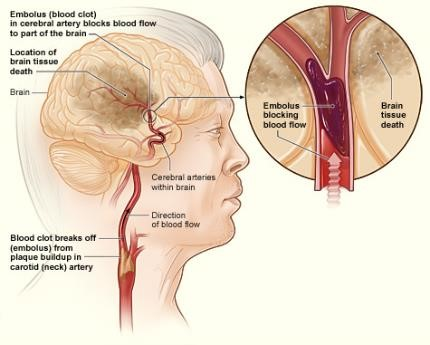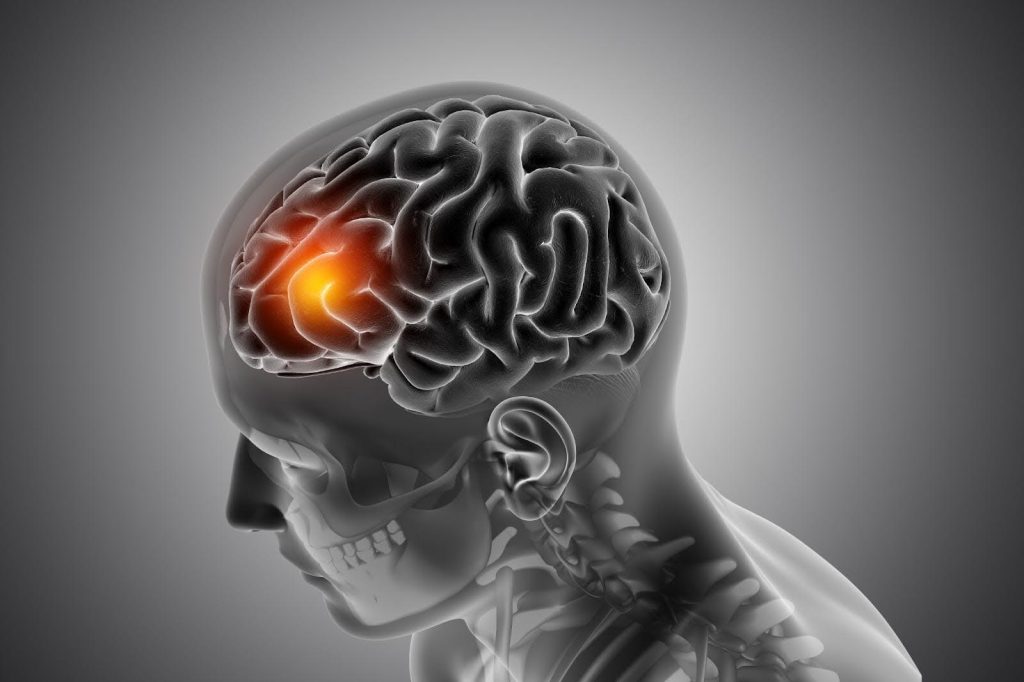

Source link: https://www.nhlbi.nih.gov/health/stroke
A stroke, also known as a cerebrovascular accident (CVA), is a medical emergency that occurs when blood flow to a part of the brain is interrupted or reduced, depriving brain tissue of oxygen and nutrients. Without prompt medical treatment, a stroke can result in brain damage, disability, or even death.
Types of Stroke
There are several types of stroke, including:
- Ischemic Stroke: Caused by a blockage or clot in a blood vessel supplying the brain, accounting for about 85% of all strokes.
- Hemorrhagic Stroke: Caused by bleeding in the brain when a weakened blood vessel ruptures, accounting for about 15% of all strokes.
- Transient Ischemic Attack (TIA): Often referred to as a “mini-stroke,” it is caused by a temporary blockage of blood flow to the brain and typically resolves within minutes to hours without causing permanent damage. TIAs are warning signs of a potential stroke and should be taken seriously.
Risk Factors
Several factors increase the risk of stroke, including:
- High Blood Pressure (Hypertension): The single most important risk factor for stroke.
- Smoking: Increases the risk of stroke due to damage to blood vessels and the cardiovascular system.
- Diabetes: Increases the risk of stroke due to damage to blood vessels and increased risk of atherosclerosis.
- High Cholesterol: Elevated levels of LDL (“bad”) cholesterol can lead to the buildup of plaque in blood vessels, increasing the risk of stroke.
- Obesity: Increases the risk of stroke due to its association with other risk factors such as high blood pressure, diabetes, and high cholesterol.
- Physical Inactivity: Lack of regular exercise can contribute to other stroke risk factors such as obesity, high blood pressure, and diabetes.
- Atrial Fibrillation (AFib): An irregular heart rhythm that increases the risk of blood clots forming in the heart and traveling to the brain.
- Family History: Having a family history of stroke or certain genetic factors can increase the risk.
- Age: The risk of stroke increases with age, with the majority of strokes occurring in individuals over 65 years old.
Symptoms
The symptoms of stroke can vary depending on the type of stroke and the part of the brain affected but may include:
- Sudden weakness or numbness of the face, arm, or leg, typically on one side of the body.
- Sudden confusion, trouble speaking, or difficulty understanding speech.
- Sudden trouble seeing in one or both eyes.
- Sudden trouble walking, dizziness, loss of balance, or coordination.
- Sudden severe headache with no known cause.
Diagnosis and Treatment
Diagnosis of stroke typically involves a combination of medical history, physical examination, imaging tests (such as CT or MRI scans), and blood tests. Treatment for stroke depends on the type and severity of the stroke but may include:
- Ischemic Stroke: Treatment may include thrombolytic therapy (such as tissue plasminogen activator or tPA) to dissolve the clot and restore blood flow, or mechanical clot removal (thrombectomy) in certain cases.
- Hemorrhagic Stroke: Treatment may involve controlling bleeding, reducing pressure in the brain, and addressing the underlying cause of the bleeding.
- Rehabilitation: Following acute treatment, stroke rehabilitation programs may help individuals regain lost function and improve quality of life.
Prevention
Preventing stroke involves addressing modifiable risk factors through lifestyle changes and medical interventions:
- Healthy Diet: Eating a balanced diet rich in fruits, vegetables, whole grains, lean proteins, and healthy fats can help reduce the risk of stroke.
- Regular Exercise: Engaging in regular physical activity can help control blood pressure, cholesterol levels, and weight, reducing the risk of stroke.
- Smoking Cessation: Quitting smoking is one of the most important steps individuals can take to reduce their risk of stroke.
- Blood Pressure Control: Managing high blood pressure through lifestyle changes and medication can significantly reduce the risk of stroke.
- Diabetes Management: Controlling blood sugar levels through diet, exercise, and medication can help reduce the risk of stroke in individuals with diabetes.
- Medications: In some cases, medications such as antiplatelet drugs (e.g., aspirin) or anticoagulants may be prescribed to reduce the risk of stroke, particularly in individuals with certain risk factors such as atrial fibrillation.
Conclusion
Stroke is a serious medical condition that requires prompt recognition and treatment. Understanding the risk factors, recognizing the symptoms, and taking steps to prevent stroke are important for reducing the risk and improving outcomes for individuals at risk of stroke.
